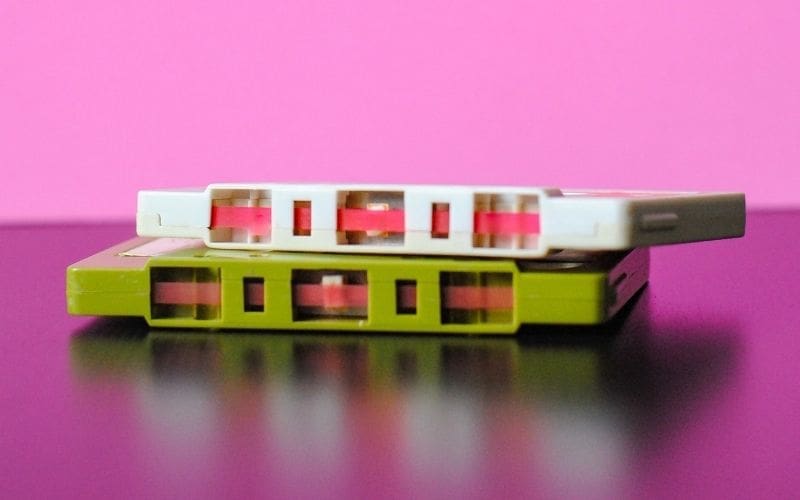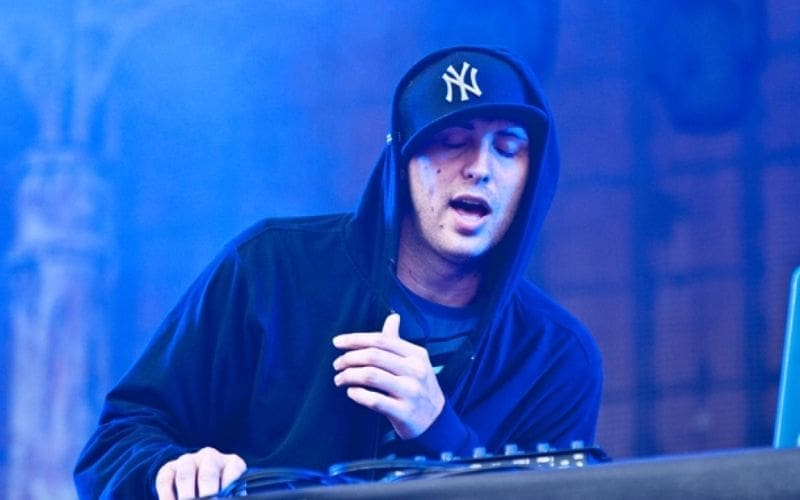
Glitch hop is an inventive and rhythmic blend of hip-hop beats, electronic music, and manipulated sounds drawn from audio and digital technology. Its individual aesthetic connects various genres and listeners from all over the vast genre spectrum.
What Is Glitch Hop?
Glitch hop is a subgenre of electronic music that combines elements of electronic dance music (EDM) and hip-hop while integrating features of ‘glitched’ music. Glitch hop is a production technique that employs the deliberate use of a broken reaction form of electronic and digital recording devices, for example, track skipping, distortion, and software crashes.
The required effect for glitch-hop is one that is more human; a hand-crafted sound rather than the refinements in a lot of EDM. This being said, the subgenre has a link to the lo-fi hip-hop aesthetic which embraces studio essentials such as vinyl crackle and allows for the idea of nostalgia to be added to recordings. Neurohop is another category of glitch-hop that became prominent in the early 2010s. it improves the multifaceted basslines and sonic atmosphere of Neurofunk and adds to the EDM-based glitch aesthetic.
The History Of Glitch Hop

The background of glitch-hop dates back to the late 1990s. Electronic music artists and producers such as Machinedrum, Prefuse 73, and Push Button Object began to combine ‘glitch’ elements with instrumental hip-hop beats.
During the early 2000s, glitch-hop groups started to collaborate with top artists (such as rapper Flying Lotus), as it increased in influence. The genre’s core shifted from hip-hop to EDM. A few years later, the tone had moved towards the bass-driven sounds of dubstep and electro house, as heard in glitch-hop music by artists like GRIZ, KOAN Sound, and The Glitch Mob.
Characteristics Of Glitch Hop Music

Various features help determine glitch hop’s distinctive sound. The most distinctive characteristics are:
Beats
Mid-tempo beats help determine glitch hop, typically drifting between 80 and 130 beats per minute. The accumulation of dubstep and electro to its DNA has amplified its regular tempo to about 110 to 115 BPM. The rhythm part (drum and bass) has a strong swing and a contemporary feel.
Glitch
Sliced-up, digitally manipulated sounds that mimic sonic artifacts are the basis of glitch-hop. Skipping, as well as repetitive sounds and phrases, distorted vocals and effects, a deliberate decrease of sound quality with some crushing, and the electronic hum of hardware, have all been included in the sound.
Mutability
Glitch hop is an extremely adaptable subgenre, smoothly incorporating various styles, from lo-fi, hip-hop and trap, to dubstep, as well as the ambient groove of downtempo. The mix-and-match aesthetics have helped shift glitch hop to EDM-based music and proposed greater creative freedom for the involved artists.
How To Make Glitch Hop Music

In order to produce glitch-hop music, there are some simple steps that artists will need to follow to create the unique sound of the genre. They are simplified as:
Listen To Glitch Hop
As a songwriter or other musical creator, the first step is to become submerged in the music genre that is to be created. A good starting point is to listen to the top glitch-hop artists, including Machinedrum, Dabrye, eDIT, and Mr. Bill.
It is easy to see how varied the genre is and how many distinctive sounds can be involved. Try to focus on the parts of the tracks that are common, and begin to understand what determines the aesthetic. Of course, the music will sound glitchy (as the name suggests). Some sorts of sounds and effects are used to replicate electronic chaos. It is important to recognize that the glitch-hop genre has a precise feel. Some areas, including lo-fi and ambient, are incredibly smooth and tranquil – whereas glitch-hop tends to have an edgy and tense feel overall. The sounds are kind of harsh, and a lot of the rhythms are jumpy.
Hardware

In the past, glitch-hop artists were creative with hardware in order to capture their sounds. It included circuit blending as well as adapting CD players to intentionally skip. As with plenty of electronic genres, a minimalistic laptop-based setup is all that is required to make pro-level music nowadays. Using an audio interface like Focusrite Scarlett 2i2 (or similar) is necessary for any home studio.
Midi keyboards like AKAI MPK Mini MkII and its competitors are powerful tools for electronic music. It enables artists to easily browse sounds and samples, write and play melodies and rhythms, and apply automation effects to their tracks. A great pair of neutral studio monitors or headphones is also necessary.
Software
Similar to most electronic music, the sound created is defined by the software used. For electronic artists, the DAW (Digital Audio Workstation) is like a virtual studio, with samples and VSTs as the instruments. An alternative way to look at it is that the DAW is the blank canvas.
There are so many choices that it can be overwhelming when choosing a digital audio workstation. Many electronic artists prefer Ableton and FL Studio, but many use Reason – which has an exceptional interface that mimics live synths and rack-mounted effects. Glitch-hop artists typically like the free Jeskola Buzz or Renoise. The DAW is just the host for sounds and effects; the musician brings the skill.
Sample Packs
A key ingredient for glitch-hop music is the use of samples. Lots of early artists created these sounds by hacking electronic devices, however, premade sample packs can easily be used to make great music. The hallmark of glitch-hop is the use of choppy, digitally-distorted sound effects in place or alongside percussion. The tracks usually use glitched sounds instead of snares or clap sounds, and stuttering digital skips in place of hi-hats. Various layers of vibrant sound effects can weave through the percussion. Lots of glitch-hop music uses simple sounds in the bass and synths.
Virtual Studio Technologies
Glitch-hop is a lively genre and the music theory is essentially quite unassuming, and frequently repeated. Other than the glitchy samples, a symbol of the genre is using automation effects to warp and move the song along. Stuttering, digital distortion, pitch shifting, and filters are popular effects that turn a basic tune into chaos. Glitch VSTs are fairly complicated, with an overwhelming display of dials. Some of the greatest glitch-hop effects are produced by randomly messing with settings!
Writing The Music

Once the hardware and software are solidified, it is time to start gathering all the materials for creating the music. No one can educate artists on how to create new music, but a good start is to write a new song part and create a simple loop, which can be used as a starting point to jam over.
Percussion
A great glitch percussion track will have layers and variations to be profound and complex. Lots of percussion tracks are based upon simple repeating patterns. Start by loading up a kick drum sound, a snare, and a hi-hat. Browse sample packs for glitchy-sounding samples- particularly for the hi-hat.
This might look different depending on the digital audio workstation of choice. Assuming the bottom is the kick, the middle is the snare, and the top is the hi-hat, artists will be capable of creating a comparable rhythm then put the tempo to 150 and loop the rhythm. This design can be the foundation for the track. Try overlaying new percussion samples at numerous points and be creative to see what works best.
Bass
Glitch hop is reasonably clean-sounding, deep, commanding bass that cements the track. The bass manages to be unassuming and repetitive, allowing the percussion to change energetically over it.
Synth
Glitch hop tends to be about the effects rather than the notes. Use a simple synth such as a saw with one sustained note. When listening back to a track, it might sound dull so try loading some glitch VSTs to the track and experiment with filters, distortion, and other warp effects. Even better, allocate some dials on the virtual studio tech to control them via a MIDI keyboard. Try to play the track and change the effects in real-time. The basic synth can produce some great glitch music.
Replicate Other Songs
One of the best ways to learn techniques and ideas is by trying to imitate sounds that are personally preferred. A good exercise is by reconstructing top glitch songs by ear. Examine various samples and try to copy the effects which are used! There is no harm in replicating in order to learn. A lot can be learned about how other songs are created in this way.
Notable Glitch-Hop Artists
Below is listed some significant glitch-hop artists who have defined the genre and scene with their unique creations:
The Glitch Mob

This popular trio is composed of edit (Edward Ma, Boreta (Justin Boreta), and Ooah (Josh Mayer). They have earned a dedicated following from their 2010 album, Drink The Sea. Their music is the widest spread of glitch-hop music with mainstream audiences. This is due to their remix of the White Stripes’ ‘Seven Nation Army’, featured in numerous film trailers and advertisements.
Opiuo

New Zealand-born Oscar Davey-Wright, AKA Opiuo, employs heavy funk and psychedelia elements in his songs. His capability to translate electronic compositions for live performances with a band has earned him praise from critics as well as listeners.
KOAN Sound

Will Weeks and Jim Bastow formed a beat-making duo, who record and perform as KOAN Sound. They began as dubstep artists prior to moving into glitch and neurohop. Their wide range of styles, which are comprised of electronic and organic sources, have led to remixes of tracks by Ed Sheeran, Skrillex, and Massive Attack producer, Deil Davidge.
Pretty Lights

Derek Vincent Smith records and produces as Grammy-nominated Pretty Lights, which started life as a duo – with producer and label owner, Michael Menet. However, Pretty Lights is now a solo entity, with Smith fusing glitch-driven beats with extensive funk and soul samples.
TOKiMONSTA

The artists’ debut album, Midnight Menu, was released in 2010. The Korean-American Jennifer Lee incorporates her classical piano background into her music and produces vast soundscapes through the use of live instruments, percussion, and digital manipulation. She is capable of fusing the sounds of the past with her musical ability into something new and experimental.
Now You Know Everything About Glitch Hop!
Glitch music might be a bit obscure and isn’t always considered a mainstream genre, but it is one of those experimental genres that filter down into mainstream forms. It is fair to say the genre of glitch-hop is based on passion and innovation. Glitch-hop artists don’t always produce the most popular and accessible music. Some describe them as like mad scientists, seeing what new and unique places their music can go.
Making glitch-hop music can be challenging at first. Top artists are the best for a reason, they put the time in, to master their art, stay determined, and always aim to improve. It is a good idea to check out some forums related to music production, in particular EDM-related genres, and don’t be afraid about approaching other artists to see how they do certain things. Keep the passion for glitch-hop music alive!
Are You An Artist?
Get Free Music Distribution and find opportunities to get your music in film, TV, and more through sync licensing. Plus get Music Supervision, Music Publishing, Music Marketing, Artist Development and utilize our Free Artist Websites and Rap Name Generator. Finally, you can amplify your music to those that need to hear it with music promotion, TikTok promotion and professional sharing tool. Why not give the gift of music today with our Gifts for musicians package?
Try all of this out for yourself by joining Мusic Gateway. Get your free trial, no strings attached.









